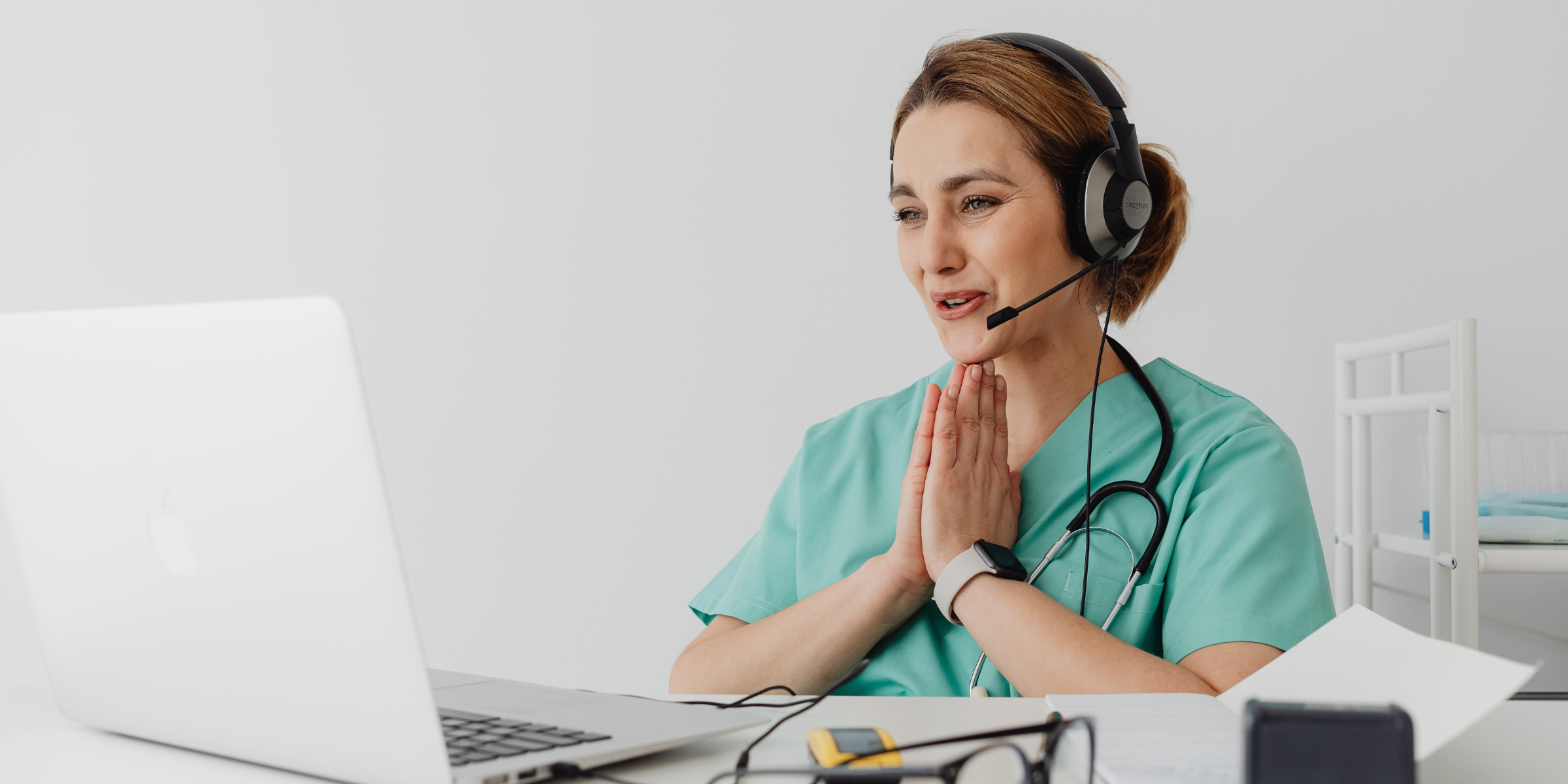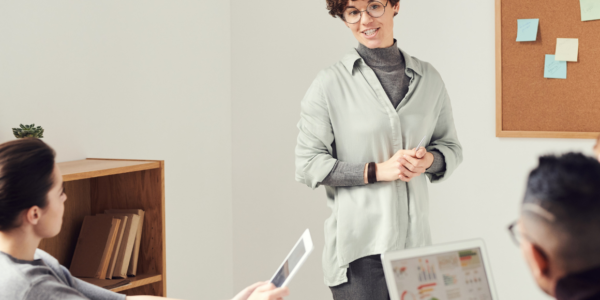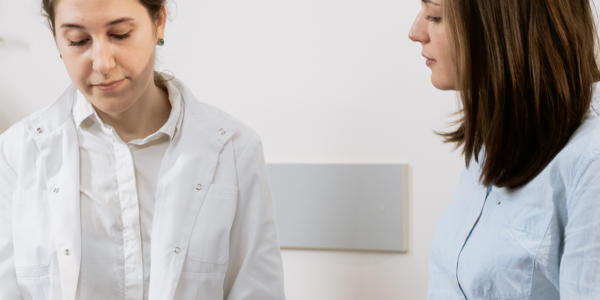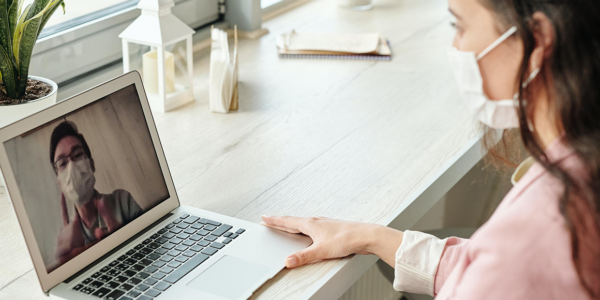Over the past few years, we’ve all had to get more comfortable relying on technology for our healthcare management. As telehealth visits were on the rise, so were questions about how to best prepare for virtual care.
How to prepare for a telehealth visit as a provider
At its core, a telehealth appointment should look and feel very similar to an in-person visit. Patients should feel connected to you during a video visit as they do when they come into the office and shake your hand.
How do you do that? Here are a couple suggestions:
Minimize distractions
Put your patients at ease with video visits by making them as smooth as possible. Make sure you know how to use your telehealth tools and are confident in their abilities when going into an appointment. Technical difficulties and complications can cause patients to lose confidence in your abilities and the dependability of the software you’re relying on.
We like to recommend giving a telehealth visit a dry run before you bring it to patients. Ask a friend, family member, or colleague to be your test subject. This allows you to get an idea of what your experience and the patient experience will be like when it comes time for the real thing.
Establish a telehealth workflow
Making sure patients know what to expect is a major contributor to the success of a telehealth visit. That’s why it’s important for someone on the team to be in charge of providing instructions on how to access their video visit and can guide the patient through the experience if they need assistance.
Choosing a platform that makes attending video visits simple is a game changer. The less hoops that patients have to jump through, the better. Even still, setting expectations will keep patients happy with their telehealth appointments.
Practice webcam etiquette
Consider what a patient may be seeing during their virtual visit with you.
This includes your background, which should be simple and unobtrusive.
Patients will also be seeing you, so make sure you present yourself as you would for an in-person visit.
You’ll also want to be sure that you are centered in the screen view and are the focal point. Eye contact can be difficult to translate through a screen. However, alternating your gaze between your camera and the screen gets the point across.
In her interview on the Patient Conversation, telehealth consultant Sam Lippolis discusses a couple of easy adjustments providers can make when conducting virtual appointments. She emphasizes that even though these changes may seem small, they go a long way to building patient trust with telehealth.
In addition to seeing you, patients need to be able to hear and understand you. This means removing as many unnecessary auditory stimuli as possible. It can be difficult to find a space completely devoid of noise. But finding a space that is as quiet as possible will make a major difference in the patient experience.
Conclude with a plan
Just as you would wrap up an in-person visit with a plan of action, you will want patients to leave telehealth appointments knowing what comes next. For video visits, this requires a bit of planning ahead. How will you disseminate this information to patients?
Many providers choose to provide both written and verbal instructions for follow-ups to patients. That’s where a secure texting platform comes in. It gives you the ability to send patients any necessary information for follow-ups via two-way texting.
Whether you have follow-up forms you need patients to complete, want to suggest booking another appointment, or need to communicate any relevant information to your patients, two-way texting makes it easy to get your correspondence in front of patients without the hassle of playing phone tag after the visit.
How to prepare your patients for their telehealth visit
Getting ready for a telehealth appointment can seem daunting. You want to make sure that everything goes smoothly and you can get the most out of the time you have with your patients. Here are a couple of suggestions we have for making sure telehealth visits go smoothly for patients.
It’s all in the preparation
Just as they would (hopefully) arrive for an in-person visit with questions or concerns, you should suggest that patients come just as prepared for their telehealth visit. You also want to encourage patients to review all communication from your staff. It is likely that you are sending valuable information regarding how to prepare for a telehealth visit. That’s why it’s important that you do your best to encourage patients to review those materials in advance.
Great! The patient’s ready. But what about their technology?
Whether patients are attending their visit on a mobile device or computer, they need to be sure that their technology isn’t going to be overloaded. We’ve all had a frustrating experience with a slow computer or slow internet. To avoid that as much as possible, we recommend that everyone close out any unnecessary applications before a telehealth visit (this will also help minimize distractions).
Another important piece to remember that is often overlooked is battery life.
If patients are not going to be plugged in during the appointment, they should make sure that their battery is fully charged and will be able to last for the entirety of the visit.
The last thing you want after scheduling a visit and beginning the appointment is for a patient’s phone to die, ending the visit prematurely.
Stay focused
It can be tricky to find a quiet, private location for a video visit. You’ll want to be in a location where you feel safe to communicate anything you need to share with your medical provider. It’s important that the location be quiet, so you can be engaged during your visit, and so your provider isn’t distracted by your surroundings.
It’s also important to remember that telehealth appointments should be treated the same as in-person appointments. Your health is a priority whether you are seeing your provider in person or not. To make sure you’re staying focused during your appointment, avoid multitasking.
Being prepared for telehealth appointments is vitally important, especially now that they are far more commonplace than ever before. Level up your telehealth preparation so that you can get the most out of every visit.





